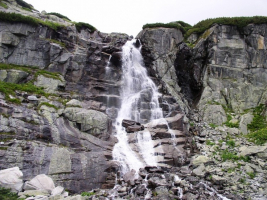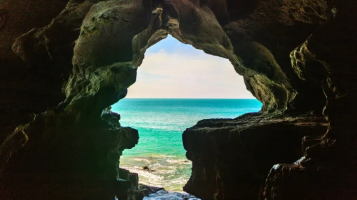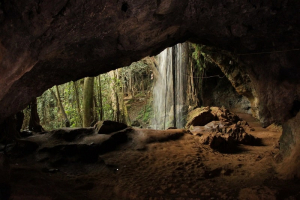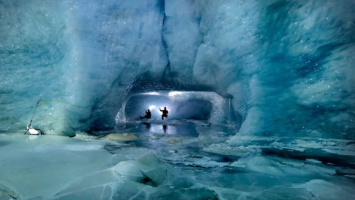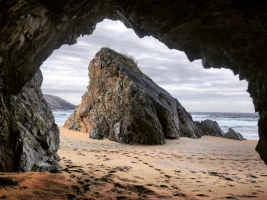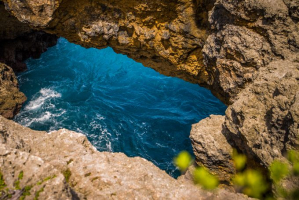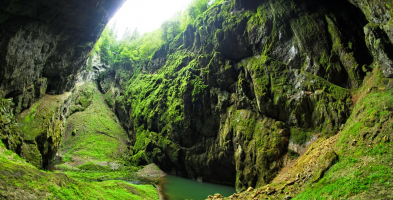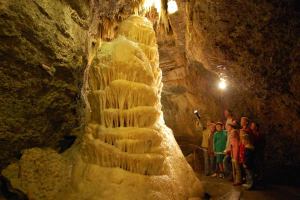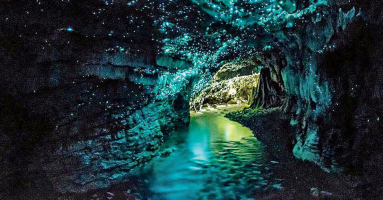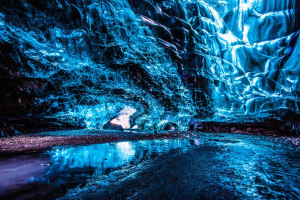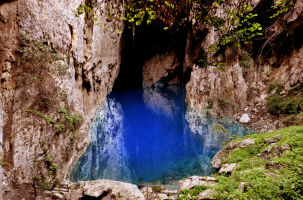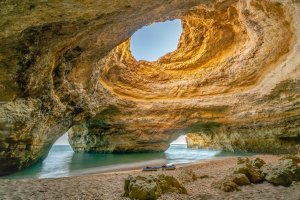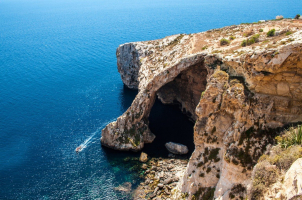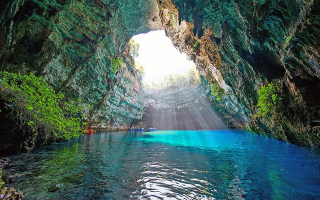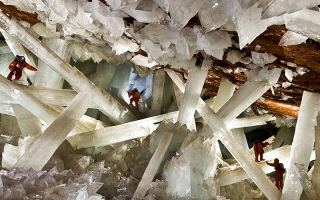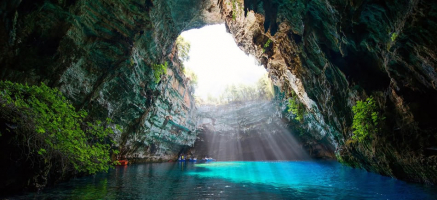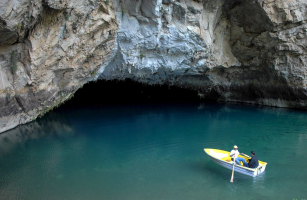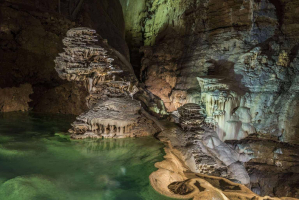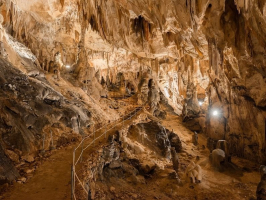Top 10 Most Beautiful Caves In Slovakia
The world beneath the surface is fascinating. It's like if you've arrived on a completely different planet...as it's if you've arrived in ... read more...paradise...underground paradise. Slovakia is one of the few countries in the world with such a large number of caves. More than 6200 caverns have been discovered in the country, and more are being discovered all the time. So far, 400 caves have been investigated. It was difficult to pick just ten, but Toplist has done so and provides the reader with information on the top ten most beautiful caves in Slovakia. Are you looking forward to seeing them?
-
The Demänovská Ice Cave is an ice cave in Slovakia's Demänovská Valley (Low Tatra). Its rank as one of the most beautiful caves in Slovakia. It was originally referenced in 1299 and is one of Europe's oldest caverns. Interest in this cave waned with the opening of Demänovská jaskya Slobody in 1924. It was reopened to the public in 1952 following a renovation of wooden stairs and electrical lights, with 680 meters of the 1,975 meters accessible. The visiting trail is currently 850 meters long and takes around 45 minutes to complete.
Ochtinska cave, located in the Roznava region, is a world rarity. It is Europe's sole cave of its sort and is listed on the UNESCO World Heritage List. The cave of Ochtinska Aragonitova, found in 1954, is unique and expensive due to its aragonite decoration. Ground ice, stalactites, stalagmites, and ice columns are examples of ice filling in the lowest regions of the cave. There is a long-known find of bones of numerous species, notably cave bears, in the cave, which were formerly thought to be dragon bones, hence Demanovska ice cave's second name, Dragon's cave.
The entrance to the "Bata" cave in the reef can be seen from the parking area, but it takes about 20 minutes to climb up to it. There are rest stops along the walk as well as informational panels. The tour is 650 meters long and takes 45 minutes. The air temperature throughout the summer months ranges from 0 to 3 degrees Celsius, so bring warm clothing and comfortable shoes. It's a good idea to unwind before entering. The relative humidity is between 92 and 98 percent.
Length: 850 m
Address: Demänovská ľadová jaskyňa, 031 01 Liptovský Mikuláš, Slovakia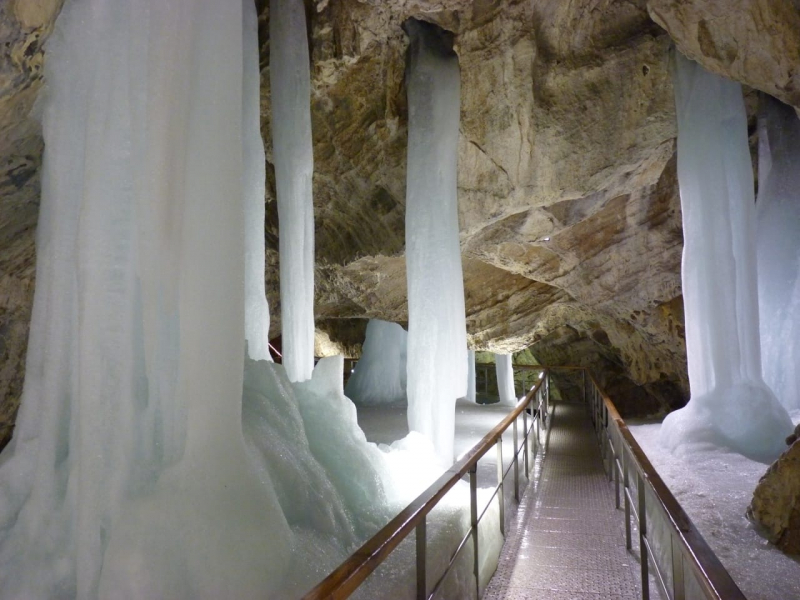
https://www.slovakia.com/ 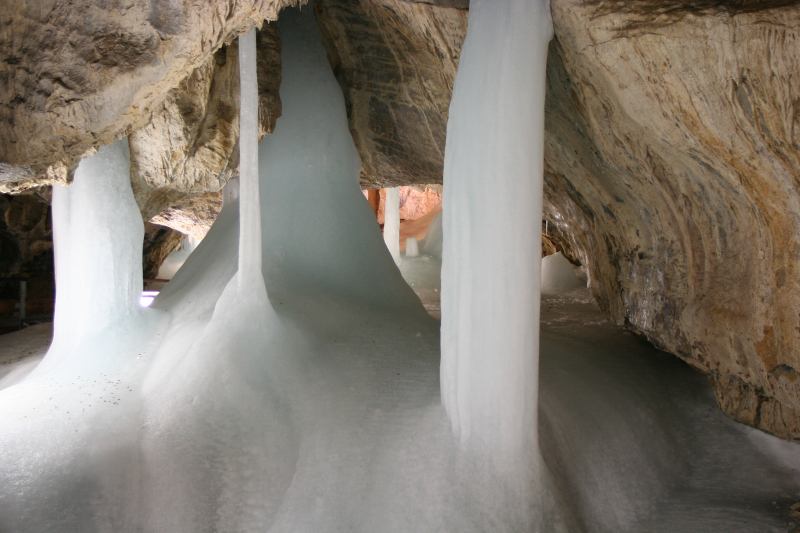
https://en.wikipedia.org/ -
Bystrianska Cave is a limestone cave in Slovakia, located on the southern slopes of the Nizke Tatry Mountains, along the route to Banska Bystrica, on the southern outskirts of the town of Bystrá, in the Brezno District, Banskobystrick area. This is one of the most beautiful caves in Slovakia. The cave's older sections have been known since prehistoric times. E. and A. Hollmann, as well as J. Kovalčík, discovered additional parts through the precipice Peklo in 1926. The Mostárenské Hall was unearthed in 1951. In 1932, the cave's lower entrance was opened. J. Majko and J. Vytsalová, along with their colleagues, connected the Old and New Caves in 1955. In 1968, the cave was opened to the public for around 490 meters (1,610 feet). Speleotherapy has been practiced in the Lower Guerilla Hall and other portions of the cave since 1971.
The cave is predominantly made up of middle trias dark limestone rocks that were generated in tectonic fissures by water corrosion, the demolition of some parts of the ceiling, and the steady enlargement of the cave by the underground river Bystra. The cave's lower section still has an underground stream that emerges in the settlement of Valaska. The cave is embellished with stalactites and stalagmites, the most notable of which are Zvonivé stalaktity, Beldachn, and Kovacska vyhna (Blacksmith's workshop). The cave has a ceiling river-bed in which the spherical granit stones of the Low Tatras are linked by sinter, apart from several erosive features. The cave is 2,637 meters long (8,652 feet) and 95 meters deep (312 feet). The cave is the most significant in the Upper Hron River Valley.
A memorial tablet in the largest dome honors the partisan who was shot and killed by fascist soldiers in the cave. Aside from the sightseeing trip, there is a medical hall that is now being utilized to treat children's respiratory ailments (speleotherapy).Length: 2,637 metres
Address: Bystrianska jaskyňa, 977 01 Brezno, Slovakia
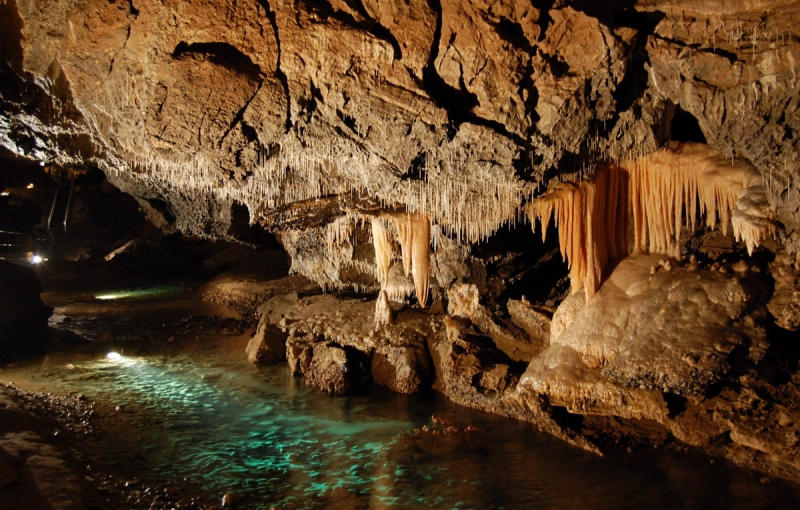
https://www.outdooractive.com/ 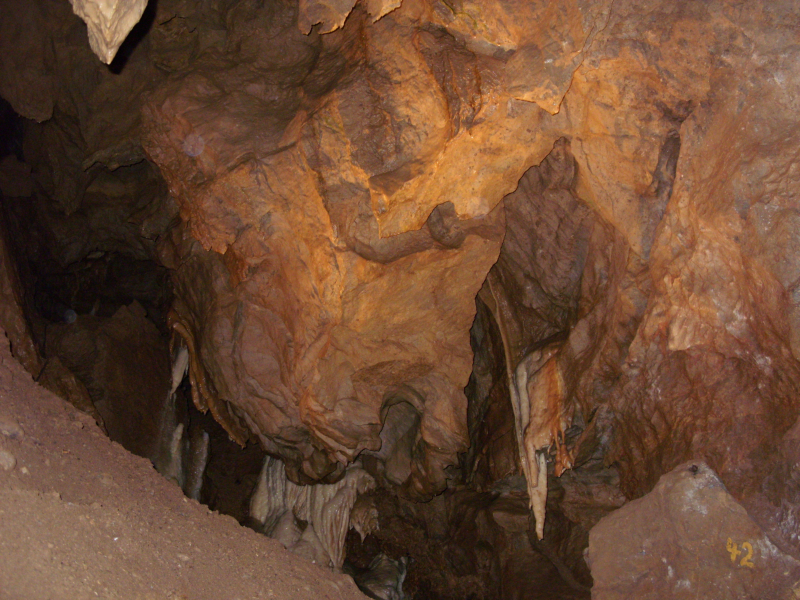
https://en.wikipedia.org/ -
The Demänovská Liberty Cave (Slovak: Demänovská jaskya slobody) is a karst cave in Slovakia's Low Tatras. In 1921, the cave was discovered, and in 1924, it was opened to the public. It is Slovakia's most visited cave. It has a distinctive drip stone adornment, making it one of Slovakia's most attractive caves.
At an elevation of 870 meters, the public entrance is located (2,850 ft). The cave's total length is 8,126 meters (5.0 miles), although only 1,800 meters (1.1 miles) are accessible to the public. The altitude difference of 67 meters must be overcome (about 10 minutes). Its corridors span more than 8,400 meters, with 7,624 meters having been examined thus far. The longer of the two visiting routes is 2,150 meters long, while the shorter walk (1,150 meters) takes 60 minutes. Bear's Passage was called after cave bear bones discovered there.
Large domes have been built, the largest of which is the Great Dome, which stands 41 meters tall and measures 75 meters in length and 35 meters in width. This cave has multiple big hollow areas known as halls and domes, each with beautiful sinters. The largest of these is Vek dóm, or the Large Dom. Visitors can observe the cave lakes as well as various portions of the Demänovka's underground river. The large lake is 52 meters long and 7 meters deep.A 400-meter route with informative boards leads to the cave's entrance at an elevation of 870 meters. The walk will last about 10-15 minutes. The cave's average temperature is 6,1–7°C. You have the option of taking a traditional or an extended visit tour. However, be aware that the lengthy visit tour is only offered once a day. For therapy, a relative air humidity of 94 to 99 percent is ideal. Allergies and respiratory diseases are successfully treated here.
Length: 8,126 m
Address: Low Tatras, Slovakia
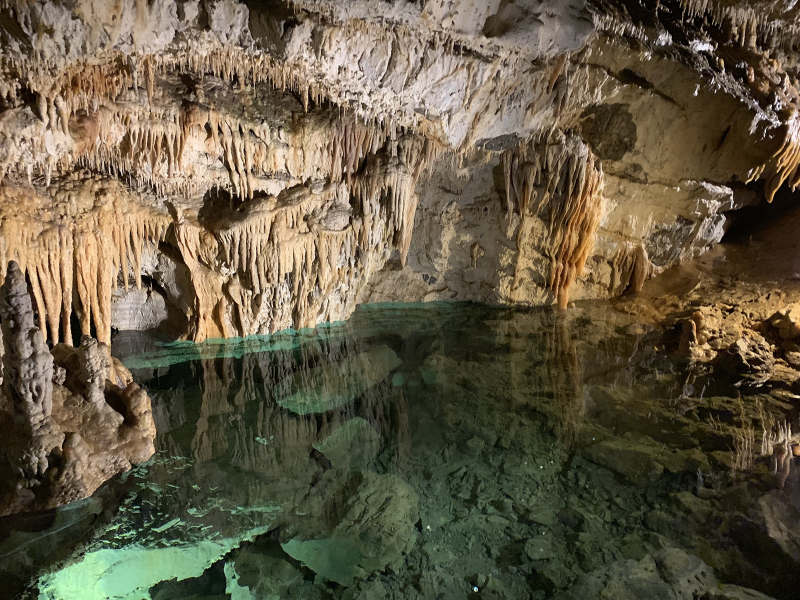
https://enjoytatras.com/ 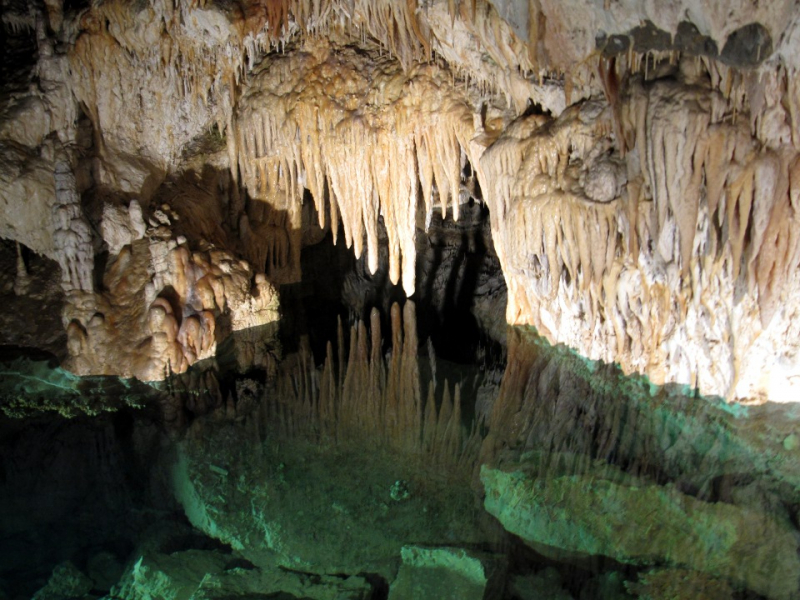
https://en.wikipedia.org/ -
The Belianska jaskyňa cave, located on the slope of the Belianske Tatry Mts. above the commune Tatranská Kotlina, is the sole public cave in the Tatras. It is one of Europe's first caverns to have electric lighting installed. It is also one of the most beautiful caves in Slovakia.
At an elevation of 890 meters above sea level, the cave entrance can be found. A pathway leads from Tatranská Kotlina to it. The cave is 3,641 meters long, with two loops available to visitors, the largest of which is 1,752 meters long. Hikers ascending to the cave entrance must overcome a 122-meter elevation difference. The cave trip is currently 70 minutes long and covers 1,370 meters.
As early as the first half of the 18th century, treasure hunters were aware of the cave's existence and approached its entrance sections. Despite this, the cave was hidden from public view for many years, and it wasn't until 1826 that L. Gulden and a gold miner named Fabry rediscovered the cave's opening.
In 1896, the cave was lit for the first time. The electricity was provided by a power plant on the Biela Brook. Only three cave trips per day were permitted at the time, although the guide was required to open the cave regardless of the number of visitors. This cave is known for its sinter waterfalls, pagoda-shaped stalagmites, and several small lakes. In addition, the cave is used for climatic therapy.Length: 3,641 m
Address: Belianska jaskyňa, 059 54 Vysoké Tatry-Tatranská Kotlina, Slovakia
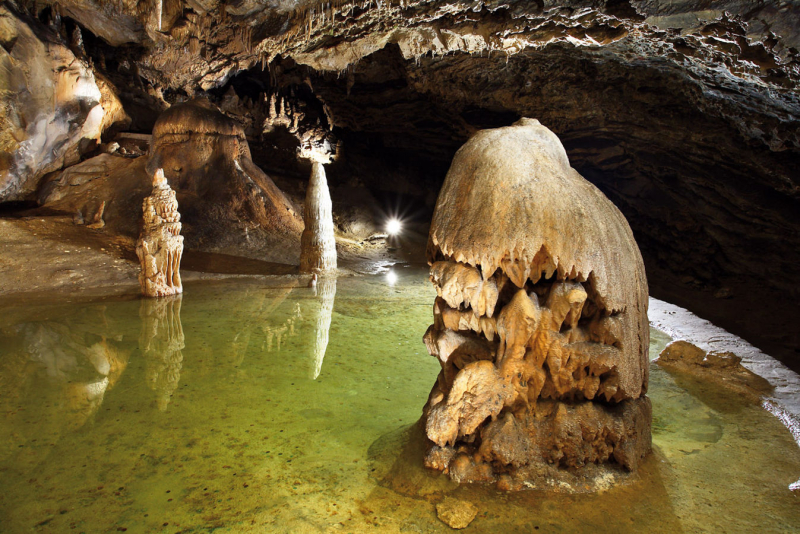
https://slovakia.travel/ 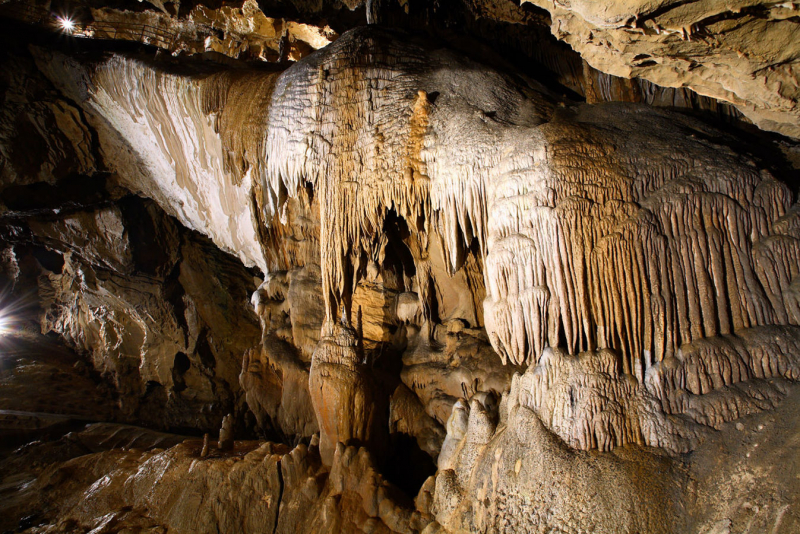
https://slovakia.travel/ -
Dobšiná Ice Cave is an ice cave in Slovakia, located near Dobšiná, a mining town in the Slovak Paradise. As part of the Caves of Aggtelek Karst and Slovak Karst complex, it has been on the UNESCO World Heritage List since 2000. This is one of the most well-known ice caves in the world, as well as Slovakia's largest. This cave is also one of the most beautiful caves in . Ground ice, waterfalls, ice stalagmites, and columns make up the ice filling, which has a volume of 110.132 m3.
The halls, corridosr, and domes of Dobšiná Ice Cave are all stunning. The cave is full of amazing ice formations and glaciers that sometimes fill it up to the ceiling thanks to the chilly air that lurks deep within it. The ice accumulating in the Great Hall measures up to 26.5 meters thick! It takes around 25 minutes to climb the 1 kilometer to the cave's entrance, which is flanked with informative boards. The tour lasts half an hour and covers 515 meters. When the temperature dips to -3°C, make sure you're dressed warmly.
The cave was discovered on June 15, 1870, by royal mining engineer Jenő Ruffinyi, joined by Gustáv Lang and Andrej Mega, despite the entrance being known to shepherds and hunters from time immemorial as Studená diera (Cold Hole). One year after its discovery, the cave was opened to the public. It was Europe's first electrically illuminated cave when it opened in 1887.
Area: 600 ha
Address: Dobšinská Ľadová Dobšinská ľadová jaskyňa, 049 71 Dobšinská Ľadová Jaskyňa, Slovakia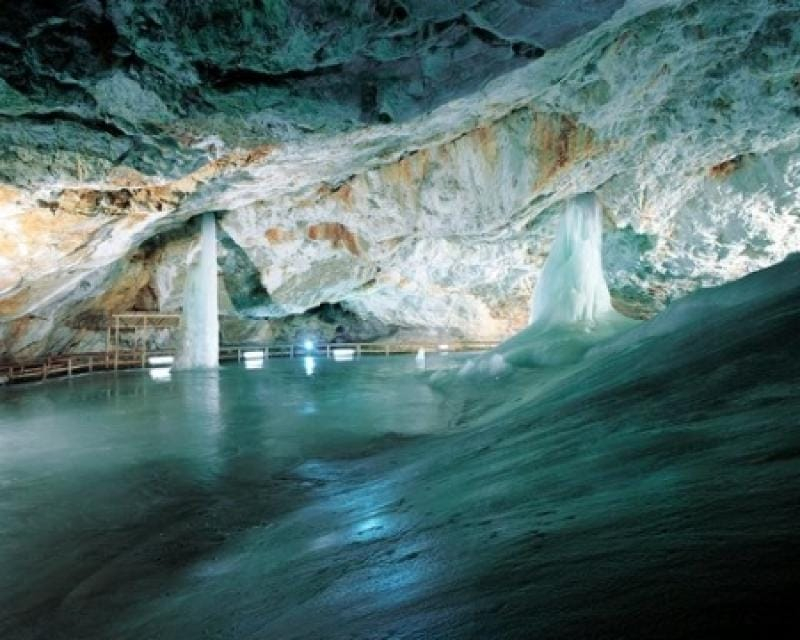
https://www.slovakia.com/ 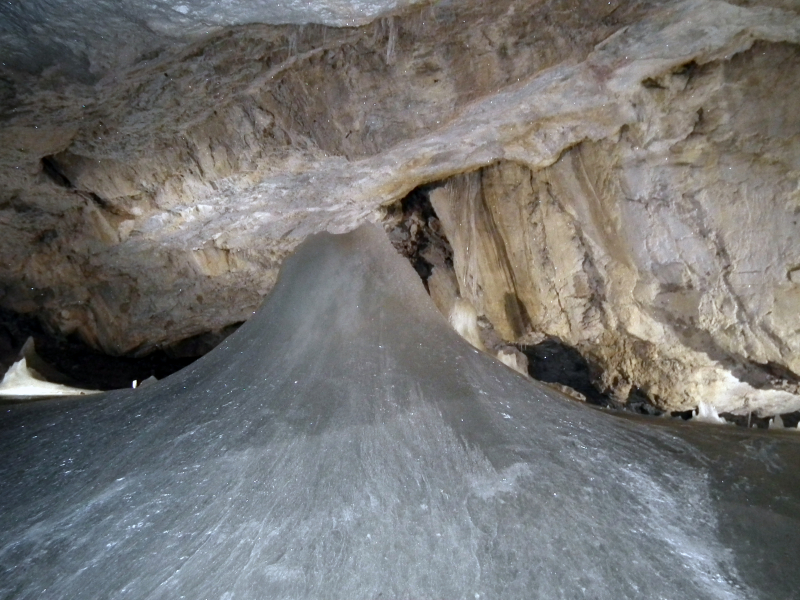
https://commons.wikimedia.org/ -
Harmanecká Cave, also known as Harmanec Cave, is a stalactite cave located in Central Slovakia. This is one of the most beautiful caves in Slovakia. It is situated on the northern side of the Kotolnica massif in the Staré Hory and Kremnica mountain ranges, as well as to the south of the Veká Fatra mountains. Harmanec and Doln Harmanec are the closest localities, and Banská Bystrica is about 16 kilometers south of the cave. It is made up of 220 million-year-old dark-grey Gutenstein limestone from the Middle Triassic period. The cave's entrance is located at an elevation of 821 meters, 260 meters above the Harmanec valley's bottom. Over 2,700 meters of underground corridors have been uncovered so far, although only 720 meters are available to the public. The air temperature ranges from 5.8 to 6.4 degrees Celsius. Humidity levels range from 92 to 94 percent.
Locals had long known where the cave's entrance was. They named it Izbica because they utilized it as a shelter during terrible weather. Michal Bacrik, an 18-year-old, was the first to locate the cave on June 22, 1932. He discovered a narrow fissure to the cave itself while making a careful examination of the entrance. He saw a strong draft and bats flying in and out via this fissure. As a result, he assumed the cave spaces were behind this crack. The entrance door to today's cave is placed here. He was able to enter the cave's first sections after two weeks of excavating. Other parts of the cave were soon discovered by the speleologists. In 1950, the cave was opened to the public, and it was designated as a national monument in 1972.
Many different creatures survive in these locations because of the safety, constant temperature, and ideal humidity. Bats are the most common creatures. During the winter, they hibernate in the cave and survive on the fat stored beneath their skin. So far, ten bat species have been documented in the Harmanec cave. The Greater Mouse-Eared bat and the Lesser Mouse-Eared bat are the two most prevalent species. They may form large groups of up to 1200 people. These subsurface habitats are also home to invertebrates.Address: Harmanecká jaskyňa, 976 03 Dolný Harmanec, Slovakia
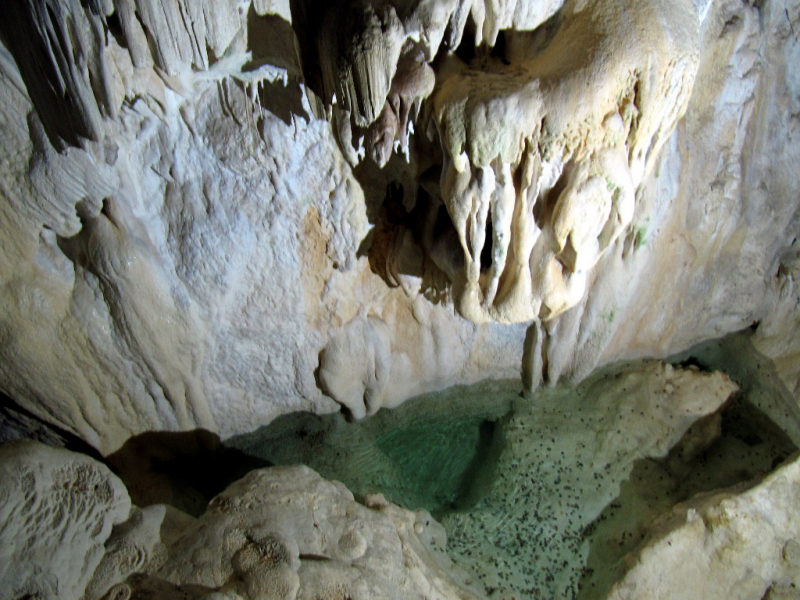
https://en.wikipedia.org/ 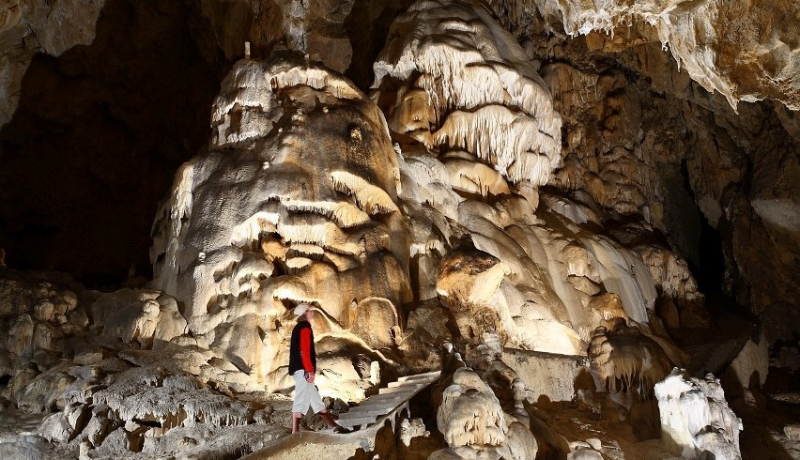
https://ecobnb.com/ -
The Domica cave is located 10 kilometers (6.2 miles) south-east of Plesivec in the Roava District of the Koice Region in southern Slovakia, and together with the Baradla cave, it forms the most significant section of the Aggtelek Karst and Slovak Karst cross-border cave network that continues into Hungary's Aggtelek National Park. Ján Majko found these huge limestone passageways, which formed during the Middle Triassic and are rich in speleothems, in 1926. Since 1932, a 1,600 m (5,200 ft) part of its overall length of 5,140 m (16,860 ft) has been open to the public. In 1995, the monument was inducted onto the UNESCO World Heritage List as part of the Caves of Aggtelek Karst and Slovak Karst.
The site is part of a complex system of formations that includes 712 caverns, many of which have long been known to the local populace. In 1801, Bartholomeides, an Ochtiná priest, recorded his first methodical trips into the Certova diera Cave. The explorer I.Vass, who investigated the Baradla cave in 1821, confirmed his findings that a variety of local caves are essentially fragments of a larger organism. In 1881, E. Nyari began archaeological investigation and proposed a link between the Certova diera and Baradla Cave, as did K. Siegmenth in 1891. Only Jan Majko's thorough effort in 1926 verified the interconnectedness of various local caverns, leading to the October 3, 1926 discovery of the Domica cave. In 1926, J. Majko peered down a 15 m deep pit into huge underground caverns, where archaeologists eventually discovered a plethora of artifacts.
During the 1930s, Jaroslav Böhm oversaw excavations. Human presence can be traced back to the Paleolithic period. The cave was most likely a temporary shelter for Eastern Slovakia's earliest Neolithic people. The cave has, however, been visited by Neolithic humans of the Bükk culture, who may have even made their distinctive thin-walled pottery there.Length: 5,140 m
Address: Jaskyňa Domica, 049 55 Dlhá Ves, Slovakia
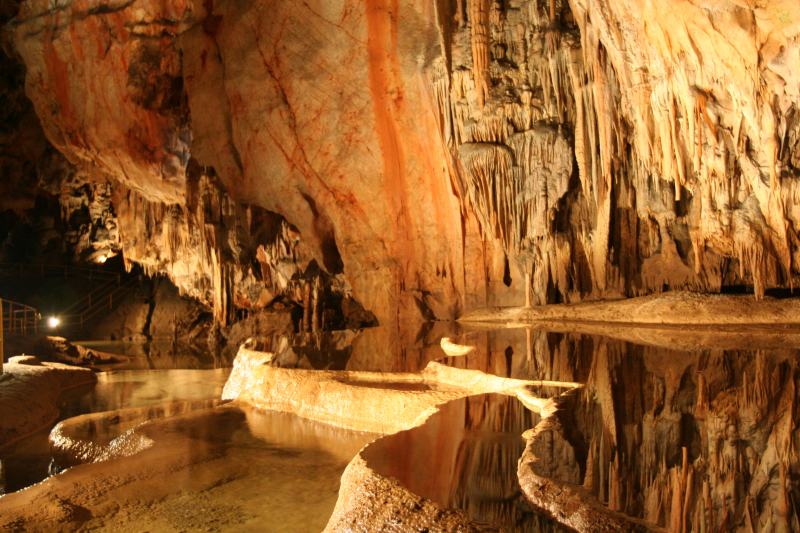
https://en.wikipedia.org/ 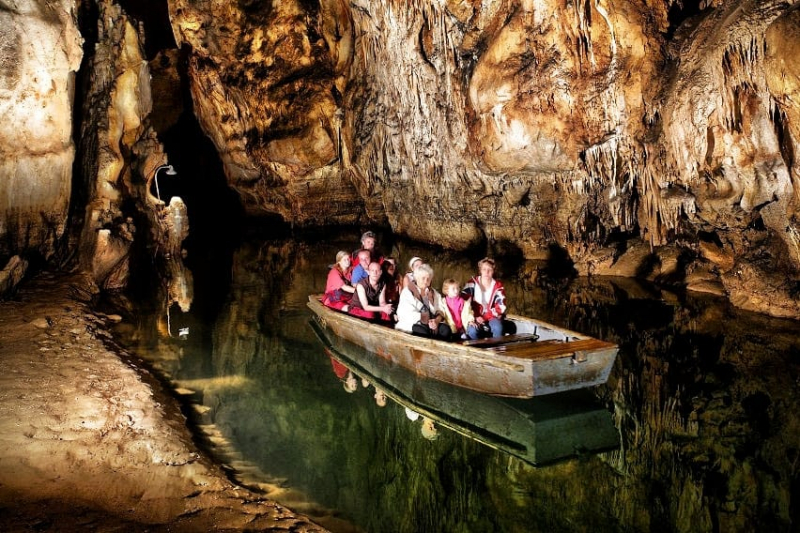
https://www.slovakia.com/ -
The Gombasek Cave, also known as Gombasecká jaskya in Slovak and Gombaszögi-barlang in Hungarian, is a karst cave in Slovakia's Slovak Karst. It is one of the most beautiful caves in Slovakia. It is called after the Gombasek community, which is part of the Slavec village. It is about 15 kilometers south of Roava, in the Slovak Karst National Park, in the Slaná river valley. Volunteer cavers discovered the cave on November 21, 1951. Only 285 m of the whole 1 525 m were available to the public in 1955. The visiting trail is currently 530 meters long and takes about 30 minutes.
The cave was also used as a sanatorium for "speleotherapy," which concentrated on airway ailments. The Gombasek Cave has been a UNESCO World Heritage Site since 1995, as part of the Caves of Aggtelek Karst and Slovak Karst.
The sinter decoration in Gombasecka cave is unique in color and fragility, and it can't be found in any other cave in Slovakia. Some white straws are only half a centimeter in diameter! Other types of stalactites, stalagmites, straws, and bark can also be found in the cave. The tour is half a kilometer long and takes 30 minutes to complete. There isn't much of a climb.
Address: Gombasecká jaskyňa, 049 11 Slavec, Slovakia
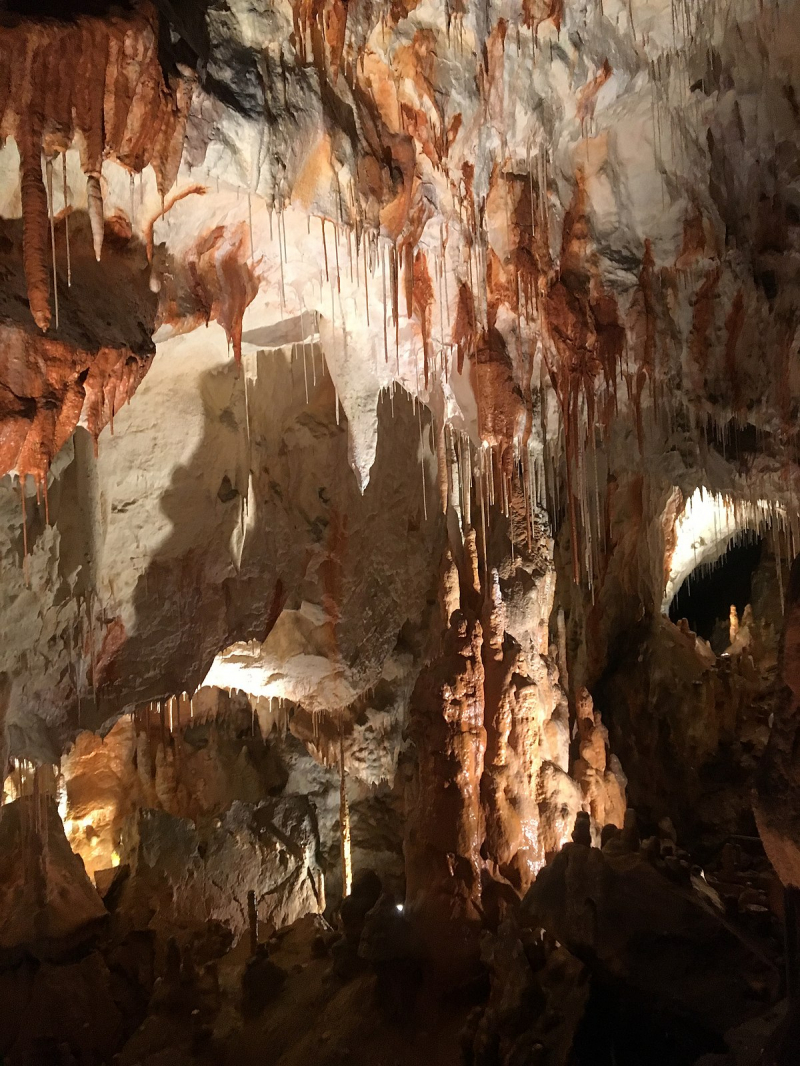
https://en.wikipedia.org/ 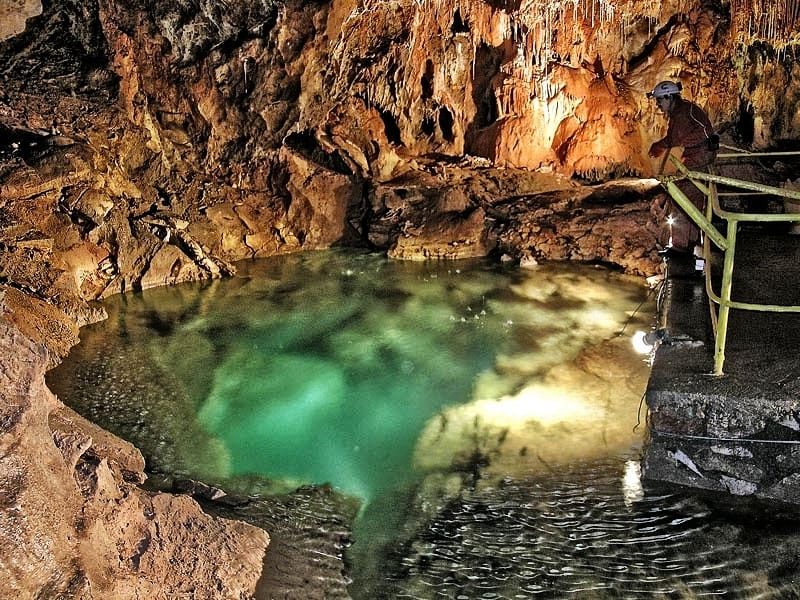
https://www.slovakia.com/ -
The Ochtinská Aragonite Cave is a one-of-a-kind aragonite cave located near Roava in southern Slovakia. It is noted for its unusual aragonite formations, although being barely 300 meters long. So yet, only three aragonite caves have been discovered in the world.
White branches and clusters of aragonite glow like stars in the Milky Way in the cave's major attraction, the Milky Way Hall. Martin Cangár and Jiri Prosek discovered the cave in 1954, and it was exposed to the public in 1972. It is listed on the UNESCO World Heritage List as part of the Caves of Aggtelek Karst and Slovak Karst site, together with other caves in the Slovak Karst.
In the cave, three generations of aragonite were unearthed. The oldest dates back 138 thousand years! The activity of atmospheric waters in crystalline limestones of white and blue-gray color developed agonite decoration in the shape of needles, tufts, branches, spirals, tips, sun, and countless other forms. The Milky Way Hall is possibly the most magnificent — the ceiling is covered in white aragonite clusters that gleam like stars in the night sky under the lamplight. The tour is 300 meters long and lasts 30 minutes. Because the elevation is only 19 meters, even tiny toddlers can handle it.
Length: 300 m
Address: Ochtinská aragonitová jaskyňa Ochtiná, 049 35 Ochtiná, Slovakia
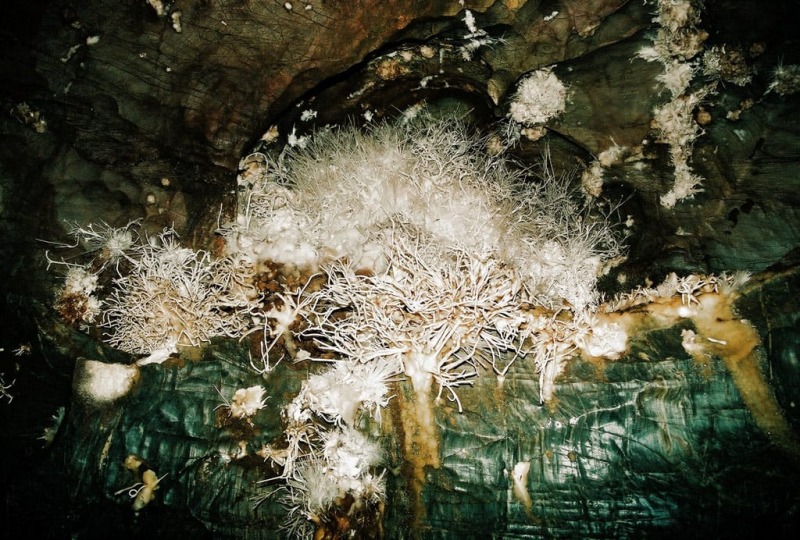
https://www.slovakia.com/ 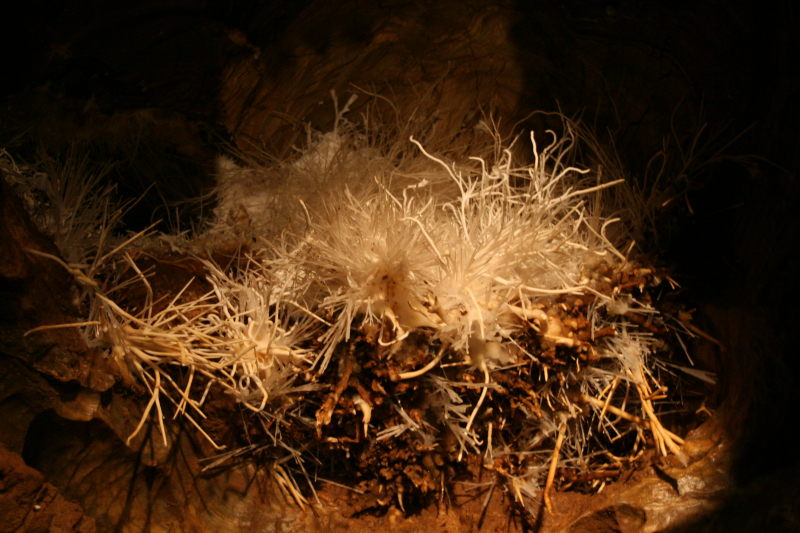
https://en.wikipedia.org/ -
In Slovakia's Slovak Karst, Jasovská Cave is a speleothem limestone cave and archaeological site. It is around 25 kilometers (16 miles) from Koice city, near the town of Jasov. This is also one of the most beautiful caves in Slovakia.
In 1846, the cave was partially opened to the public, making it Slovakia's oldest publicly accessible cave. The cave's lower levels were found between 1922 and 1924, and a concrete footpath and electrical lighting were erected in 1924. The public has access to 852 meters (2,795 feet) out of 2,148 meters (7,047 feet). The cave has yielded numerous archaeological finds from the Paleolithic, Neolithic, and Hallstatt eras. Jasovská Cave was inducted into the UNESCO World Heritage list as part of the Caves of Aggtelek Karst and Slovak Karst site, together with a number of other caves in the Slovak Karst.
Inside the cave, the underground flow of the river Bodva has carved several tunnels and crevices. The stalactite design in the hall and domes is lovely and colorful. Pagoda-like stalagmites, flowstone waterfalls, drums, straws, and other formations attract attention. We'll visit a beautifully lighted stalactite lake during the tour. An inscription from 1452, which chronicles the Hussite military triumph, may be seen in one of the domes. Bones of cave bears and cave hyenas were discovered in the cave. During the winter, it is also an important resting spot for 19 different species of bats.Length: 2,148 m
Address: Jasovská jaskyňa, 044 23 Jasov, Slovakia
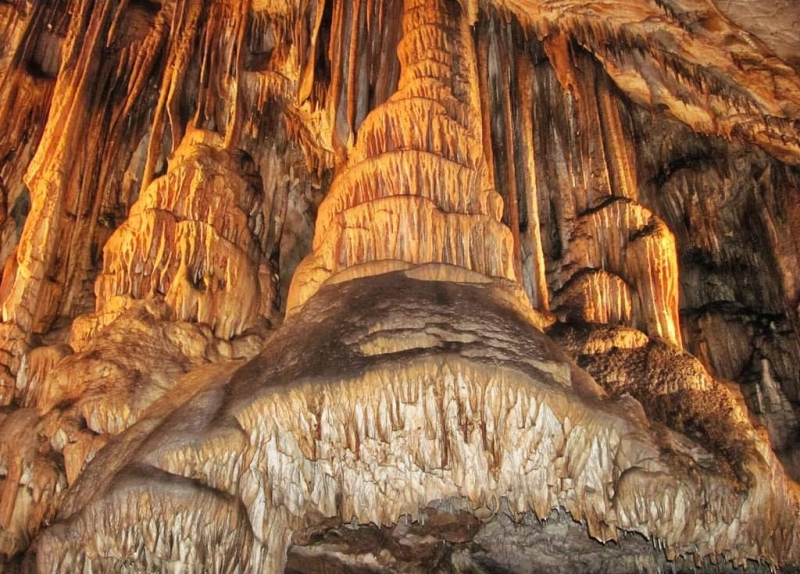
https://www.slovakia.com/ 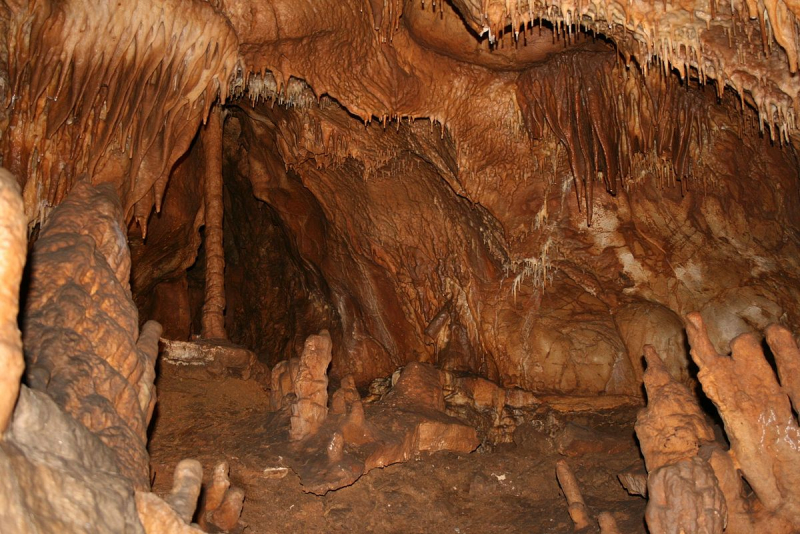
https://en.wikipedia.org/












